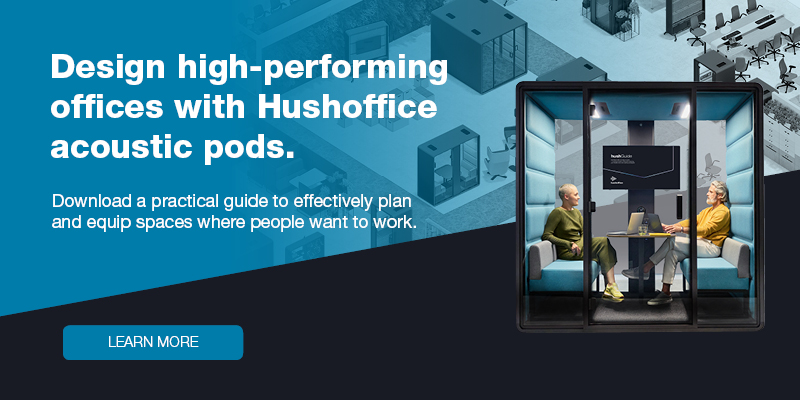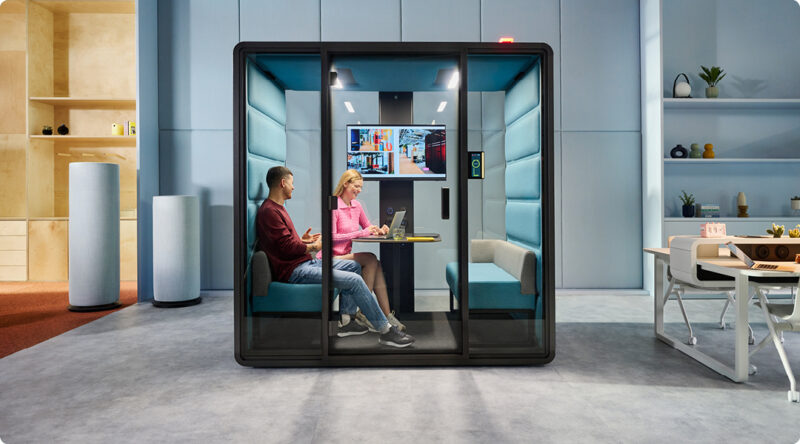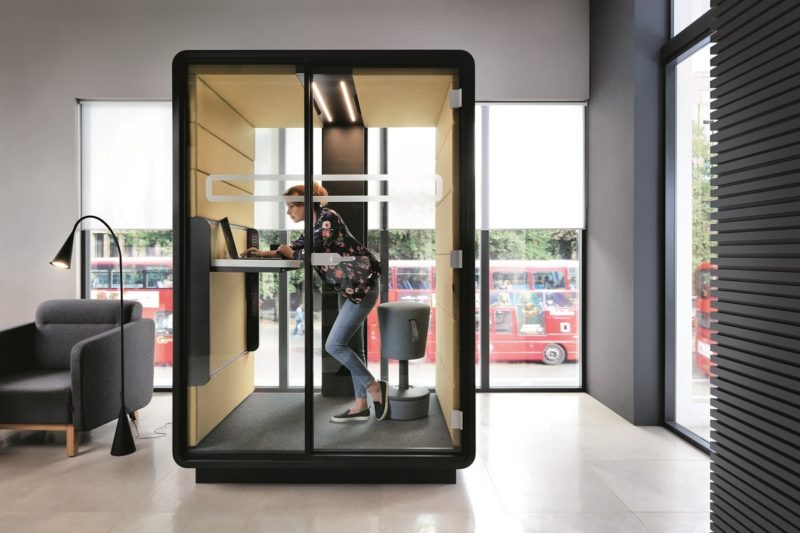Managing office spatial chaos using acoustic booths
- Posted on: 24 June 2024
- By: Hushoffice Team
What actually is spatial chaos in the workspace and how does it impact the working environment? Let’s take a closer look at its implications and the key contributors to the chaos in the office.
Spacial chaos – tl;dr
Spatial chaos in the workplace is exactly what it sounds like: a disorganised office space impeding workflow and employee performance. It could be cluttered desks, ambiguous wayfinding with congested corridors hindering navigation, or cramped workspaces – all of which deprive workers of private space, allowing noise to strain employees’ mental resources.
While visual chaos is a relatively simple issue to address, wayfinding in the office poses a greater challenge. Noise is possibly the most destructive source of workspace chaos as it significantly affects our emotional well-being. Addressing all three factors — clutter, noise, and wayfinding — is essential to transform a disorderly workspace into a peaceful, focused working environment.
Booths are an effective solution for office chaos, addressing all three key sensory aspects (clutter, noise, and wayfinding). Minimally designed, they encourage users to bring only the essentials while attending meetings or work sessions. Despite their substantial size, they can be seamlessly moved within the office space, allowing teams to intuitively adjust the layout to their current needs. Acoustically engineered pods and booths also help mitigate noise in open-plan workspaces.
What actually is office spatial chaos?
Spatial chaos is characterised by disorder, disarray, disarrangement, and general commotion within the workspace. In the office, It manifests as excessively cluttered sightlines, poorly organised and congested walkways, distracting soundscape, and messy desktops. In essence it signifies restlessness.
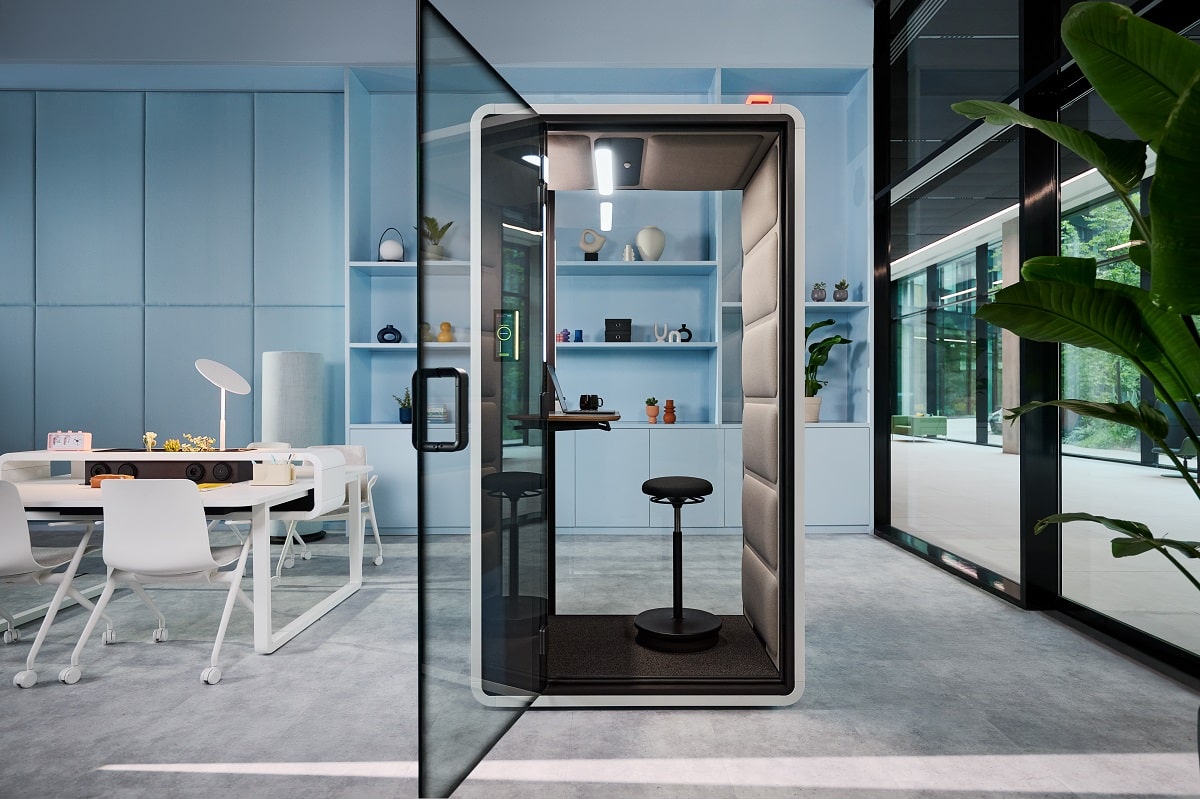
Voices, footsteps, beeping notifications – an office symphony or rather cacophony?
The office’s acoustics reflect its organisational ambience. Sound is measurable energy that can be physically felt, which is why the appropriately designed acoustics can enhance employee well-being and focus, ensuring seamless collaboration.
While chaos can take many forms, noise has its unique psychological implications that need to be addressed separately. When the office ambience consists of relatively unobtrusive sounds, such as peer collaboration, informal meetings, and device notifications, it fosters effective workflow and boosts productivity. Conversely, when these sounds become too loud and clash, forming an unpredictable cacophony, the working environment fails to support employee performance. As usual, it’s your employees’ feedback, based on their daily experiences, that will be the most reliable indicator of whether the office acoustics bolster or impede focus within the workspace. And finally, the most practical approach to enhancing the office soundscape is to create a variety of zones, each with its own unique sound qualities. This could include introducing private booths for uninterrupted focus, while maintaining the necessary balance between more vibrant areas, such as cafes or work lounges, and quieter, focused spaces. Through deliberate implementation of variety, the chaotic workspace can be transformed into a functional, well-organised, zoned-out working environment
– says Mateusz Barczyk, Senior Brand Manager, Hushoffice.
Our brains favour calm and continuity.
According to research by Princeton University’s Neuroscience Institute, our brains distinctly prefer order. Both visual and auditory chaos drains our mental bandwidth, impeding our ability to concentrate. For example, after decluttering their workstations, employees tend to increase their productivity.
Office chaos stems from a lack of order in the work environment.
Spatial order implies high aesthetic values, such as attractiveness and modernity. But it also encompasses usability, readability, and clear structures. And each zone needs to meet efficiency criteria through the appropriate choice of furniture, thereby maintaining harmony between compactness and emptiness.
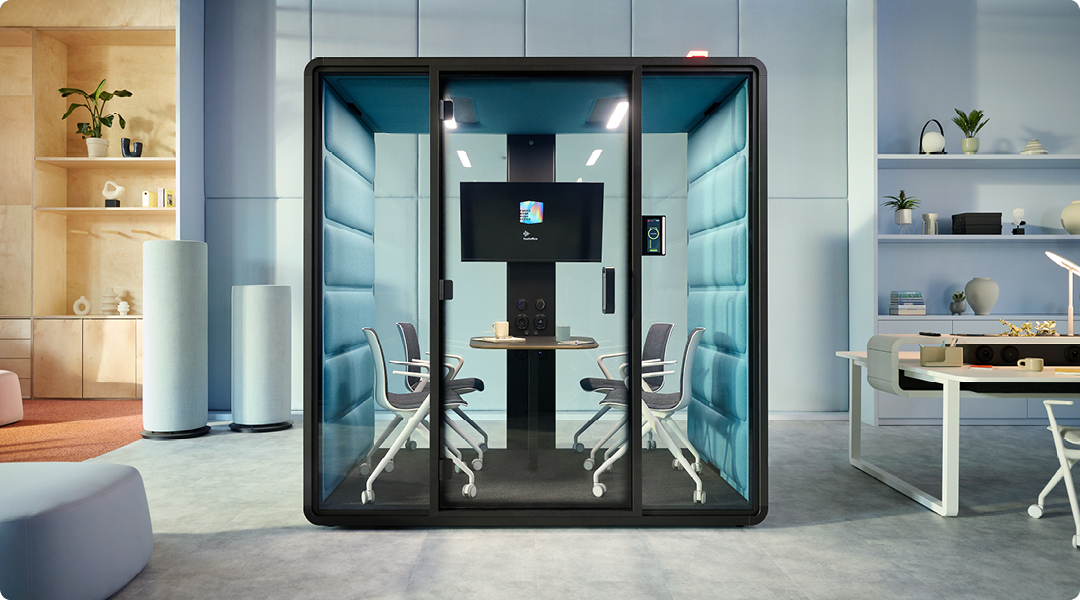
Visual clutter, a clear component of spatial chaos, impairs employee efficiency.
It’s hardly surprising that visual clutter has been proven to negatively influence judgement performance and cognitive processing. Therefore any clutter – whether it’s a messy storage area or disorderly furniture arrangement, increases the likelihood of judgement errors, leading to more mistakes on the part of employees.
Clutter also affects mental health – when excessive, it becomes overwhelming.
The good news is that simply decluttering one’s immediate working environment can refresh their mind, too. Such tidiness has been shown to mitigate stress and anxiety, while enhancing task focus. Indeed, an efficient workspace must be free of visual distractions, enabling workers to fully concentrate on their tasks at hand.
- 40% of workers report that a cluttered workplace decreases their productivity
- 49% of workers report that office clutter negatively affects their daily attitude to going to work
- Employees with clean desks feel more in control, productive and generally more satisfied
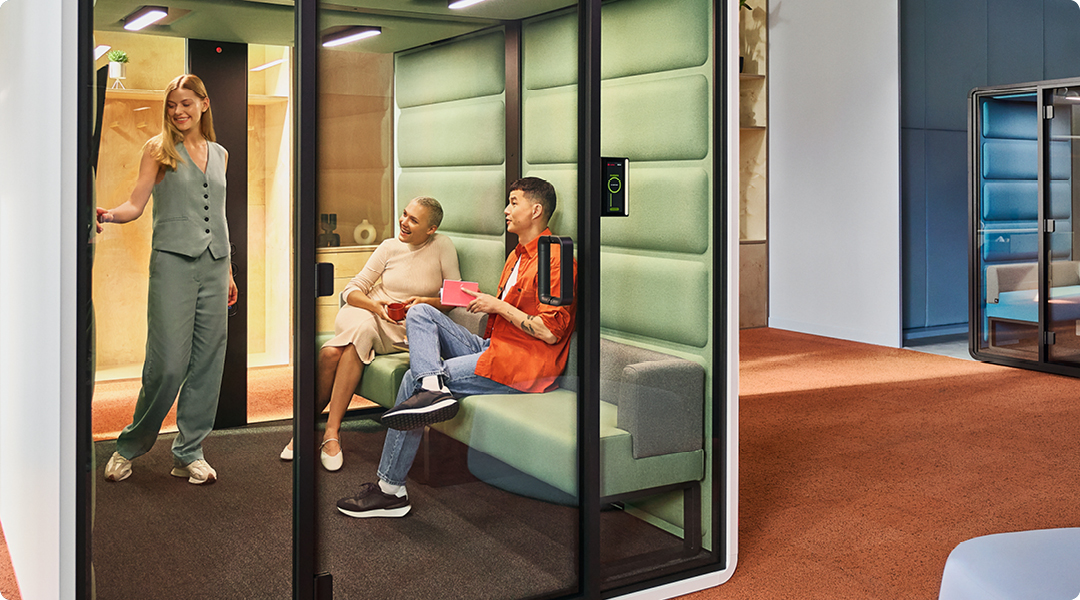
Wayfinding plays a crucial role in establishingoffice order, which is central to employee well-being.
Poor wayfinding is detrimental both physically and psychologically. It may lead to confusion, frustration, increased stress levels, or even more physical manifestations such as headaches. Conversely, effective signage, floor layouts, and easily identifiable landmarks create a well-structured space that is harmonious and easy to navigate.
Noise is the ultimate “chaos” factor, significantly impairing our cognition.
Noise can put the body on alert, elevating stress hormone levels. When forced to allocate additional resources to filter out sounds, the brain has limited capacity for performing basic tasks, ultimately reducing productivity.
The office needs to be designed (and organised) with acoustics in mind to enhance workflow.
Many employees view clutter as the primary and most visible cause of office chaos. Wayfinding is not so obvious, but it significantly affects navigation within the office space, either facilitating or hindering movement. The third and most emotionally influential element of office clutter is acoustics.
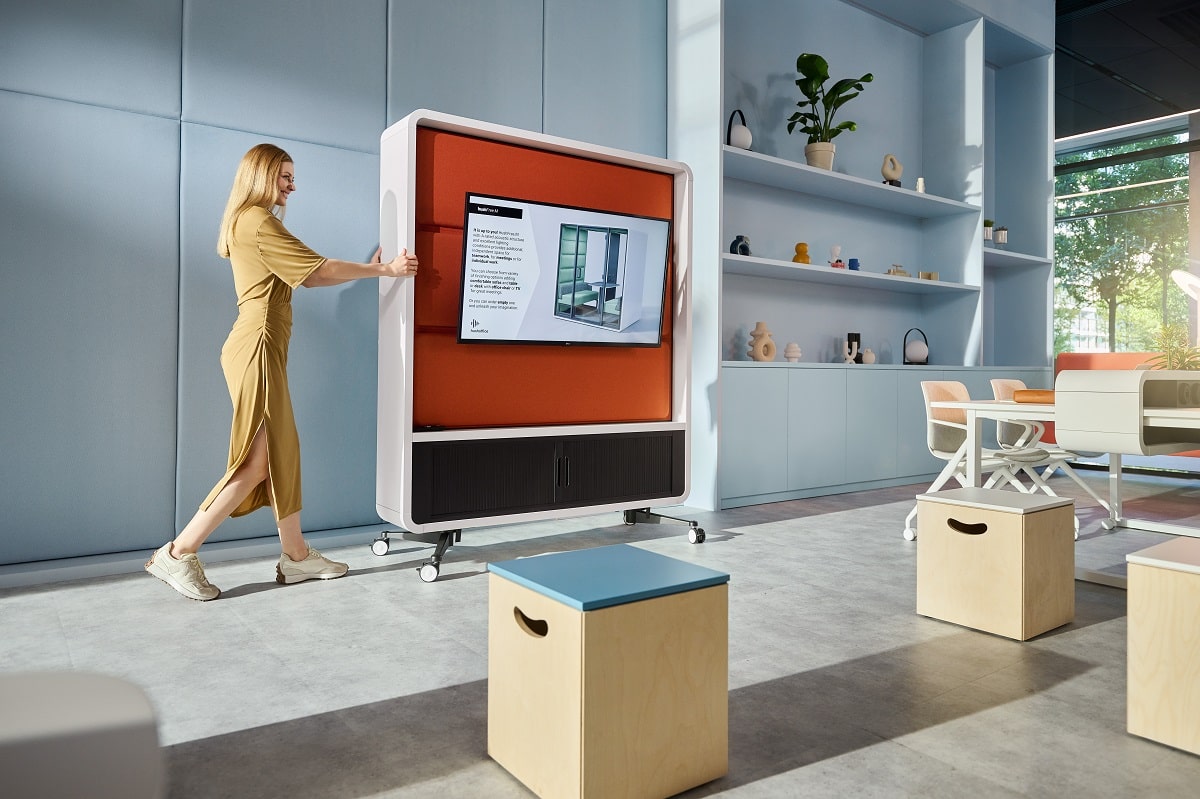
Office pods are exceptional spatial solutions, transforming chaos into calm, starting with acoustics.
An office booth divides space while also creating a distinct new area within it. It contains user noise, enabling other employees to fully focus on their work without being disturbed. Additionally, booths provide unparalleled privacy, minimising peripheral activities, and offering a peaceful retreat in an uncluttered, structured environment.
Isolation vs. integration. Office booths add variety to the office sensory landscape.
Booths are an effective way of introducing order into the workspace. Primarily, in terms of acoustics, they serve as self-contained, peaceful sanctuaries fostering undisturbed focus. While the office layout may periodically change, booths remain stable places of seclusion, adding more diversity to the whole range of available work settings.
More than strict sound-insulation. Pods ensure premium, professional acoustics.
Booths such as hushFree are acoustically designed to be quiet, but not excessively quiet. Inside the booth, office noise becomes a soft murmur. As a result, the user is supported by the optimal degree of quietude, without feeling entirely isolated.
It’s not only about quiet – office pods and booths also excel at functionality and comfort.
A premium office cabin features customisable lighting and ventilation. Although visual and thermal comfort are often overlooked, they are essential elements of office ergonomics and employee well-being. Additionally, a high-quality pod is equipped with appropriate furnishings to facilitate effective working.
HushFree acoustic booths zone space while creating a space within a space.
Pods serve as an effective spatial solution as they can be seamlessly relocated whenever necessary. Due to their substantial size, relocating them can considerably alter the office layout. You can easily adjust their arrangement to meet your current needs, enjoying their reliability and comfort they provide.
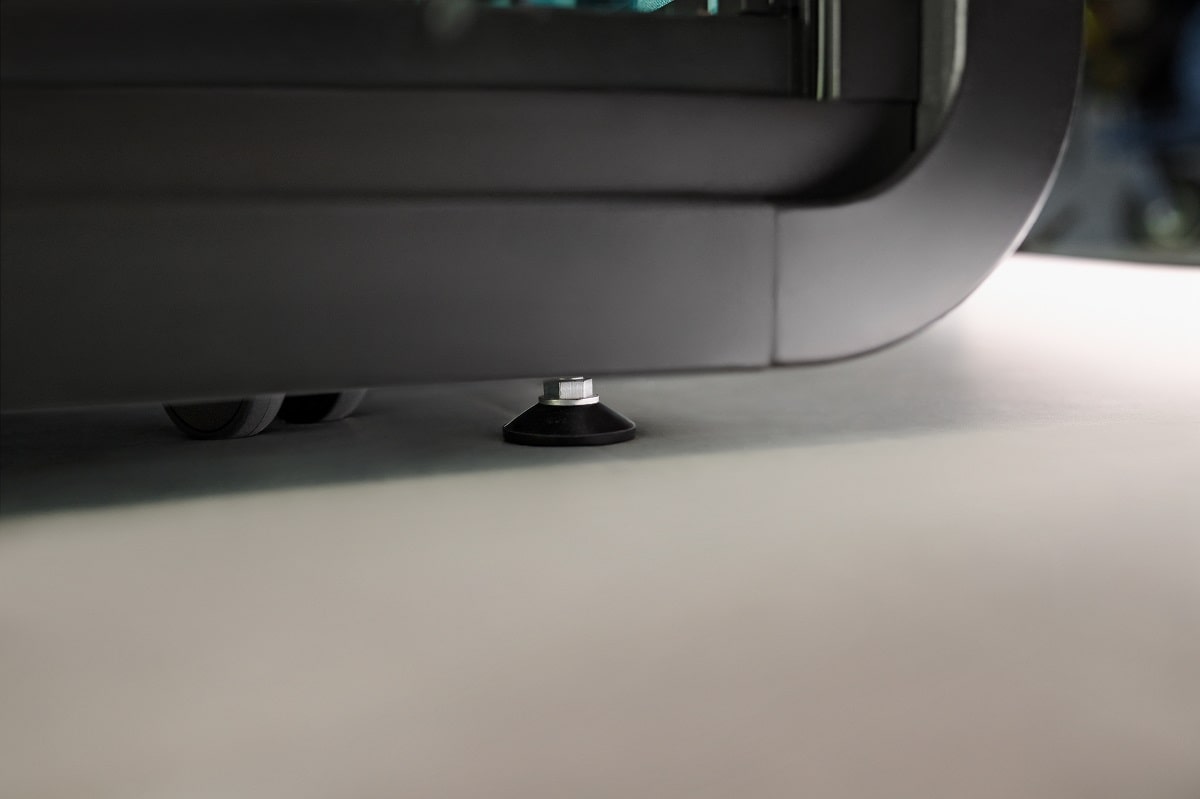
Zone #1: Calm, focused, individual work in hushFree.S
If your team members are in need of a fully-furnished, multifunctional video call booth, consider hushFree.S. Equipped with adjustable lights, it features extra video light strips for enhanced readability of participants’ facial impressions.
Zone #2: Meetings and creative team sessions in hushFree.M
Problems with a limited number of conference rooms? Consider our hushFree.M 4-person meeting pod, which is a functional alternative to inflexible built infrastructure. Acoustically designed hushFree.M ensures unparalleled speech privacy.
Zone#3: Relaxation and regeneration in hushFree.L
Relaxation is essential to productivity. A comfortable, multi-person office booth such as hushFree.L can serve as an excellent breakout room, being large enough to accommodate cosy seating and a TV monitor. This setup ensures ideal conditions for employees to sit back and relax.
Vision of the future: how do acoustic booths influence office design trends?
Pods transform the office by introducing genuine variety. Individuals who perform best in sensory-deprivation environments can use them for focused work, while extroverts can thrive in the lively bustle of the open-plan office. Although the office may experience its ups and downs, pods remain stable sanctuaries of peace and quiet, always available to those who need them. In this way, they enhance the working environment by offering spaces that meet employees’ diverse needs and fostering the autonomy necessary to discover their optimal workflow. Designed as clutter-free spaces, pods create an atmosphere of streamlined focus, encouraging workers to join meetings with minimal belongings. Both solid and mobile, they allow the organisation to seamlessly modify their office layout to ensure efficient wayfinding – an essential ingredient of spatial order in a workspace. But above all, booths effectively solve the noise problem – the most emotionally impactful component of functional coherence in the office
– says Mateusz Barczyk, Senior Brand Manager, Hushoffice.
Find out more about our hushFree collection here.
Spacial chaos
Spatial chaos in the workplace is exactly what it sounds like: a disorganised office space impeding workflow and employee performance. It could be cluttered desks, ambiguous wayfinding with congested corridors hindering navigation, or cramped workspaces – all of which deprive workers of private space, allowing noise to strain employees’ mental resources.
While visual chaos is a relatively simple issue to address, wayfinding in the office poses a greater challenge. Noise is possibly the most destructive source of workspace chaos as it significantly affects our emotional well-being. Addressing all three factors — clutter, noise, and wayfinding — is essential to transform a disorderly workspace into a peaceful, focused working environment.
Booths are an effective solution for office chaos, addressing all three key sensory aspects (clutter, noise, and wayfinding). Minimally designed, they encourage users to bring only the essentials while attending meetings or work sessions. Despite their substantial size, they can be seamlessly moved within the office space, allowing teams to intuitively adjust the layout to their current needs. Acoustically engineered pods and booths also help mitigate noise in open-plan workspaces.
Spacial chaos – frequently asked questions
How can we define spatial chaos in the workspace?
There are several elements contributing to office spatial chaos, including clutter, congestion, noise, a shortage of private space, insufficient lighting, and poor ventilation. Essentially, spatial chaos is not only about aesthetics, but it forms a tangible barrier to productivity and well-being. Therefore, proactive measures need to be taken to restore order and balance in the office.
What can be done to create a calmer workspace?
To transform a bustling, disorderly office into a more peaceful one, focus on three key aspects: clutter, wayfinding, and noise.
How does noise influence employee focus?
In fact, loud noises may put the body on alert, increasing the levels of stress hormones including cortisol. This forces the brain to allocate additional resources to filter out sounds, thereby leaving less mental bandwidth for basic tasks and reducing overall performance.

